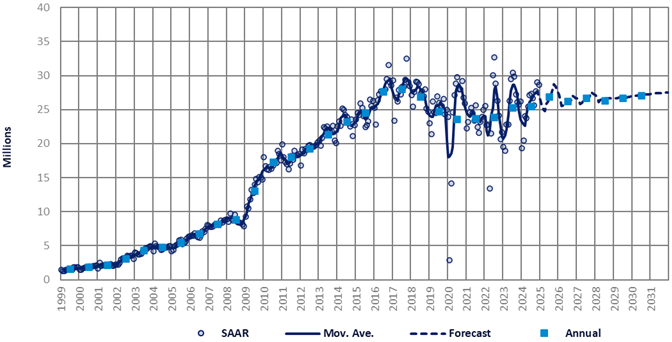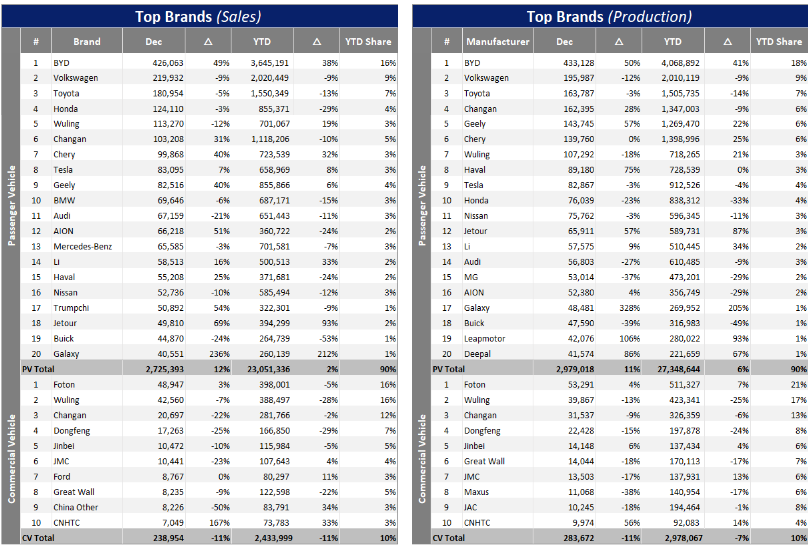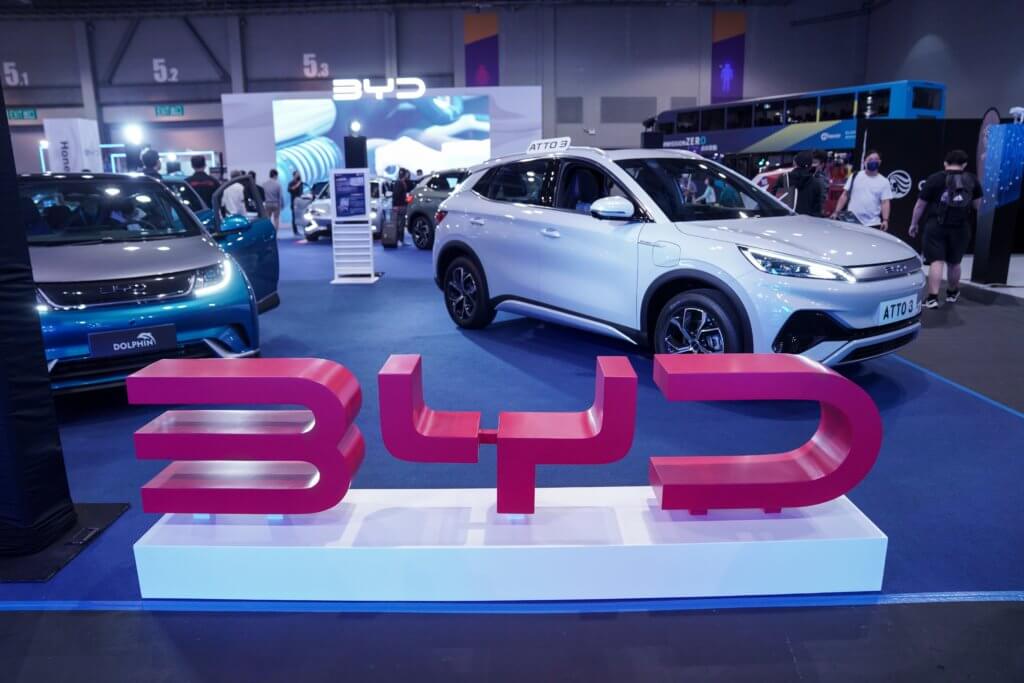China’s automotive market continues to gain momentum, while the effects of the old-for-new subsidy continue to materialize. Light Vehicle (LV) sales, excluding exports, reached 3.0 million units in December 2024, representing a 9.4% year-on-year (YoY) increase and a significant month-on-month (MoM) rise of 4.8%.

As the year-end approached, OEMs worked hard to achieve their annual targets, causing the market to heat up. The trade-in subsidies that expired at the end of December significantly boosted the market. Additionally, since the Spring Festival in 2025 was at the end of January, some purchase demand that would have typically been met before the festival instead occurred early in December 2024. In terms of model type, Passenger Vehicle (PV) sales dominated with 2.7 million units, marking a significant YoY increase of 11.6% and a substantial MoM rise of 4.3%. In contrast, Light Commercial Vehicles (LCVs) faced challenges, with a 10.4% MoM increase but a substantial YoY decline of 10.8%. For the whole year of 2024, cumulative LV sales reached 25.5 million units, representing a YoY growth rate of 0.9%. Within this total, PV sales amounted to 23.1 million units, recording a marginal YoY increase of 2.5%, while LCV sales stood at 2.4 million units, indicating a more pronounced YoY decline of 11.1%. Based on the data, the December selling rate (which is based on wholesales) was 28.6 million units/year, slightly lower than November’s 29 million units/year.

In 2024, although domestic consumer confidence was still insufficient, the international trade protectionism situation was more severe. In addition, industry competition was further intensified, a series of policies continued to work effectively, local subsidy policies were effectively implemented, and corporate promotion activities were still popular. Multiple measures were taken to stimulate the vitality of terminal consumption in the auto market, promote the sector’s steady improvement, and maintain a positive trajectory in production and sales.
It is worth noting that the growth seen in 2024 was mainly attributed to the old-for-new policy implemented in the second half of the year. The introduction of the policy further stimulated consumers’ enthusiasm for vehicle purchases and promoted the continued growth of sales. It also fueled the transformation and upgrading of the automobile industry, as well as the development and growth of emerging industries such as New Energy Vehicles (NEVs). According to data from the Ministry of Commerce, in 2024, more than 2.9 million vehicles were scrapped and updated, and more than 3.7 million vehicles were replaced and updated, totaling over 6.6 million vehicles. This drove automobile sales of more than CNY920 billion ($128 billion). In the old-for-new car exchange policy, the proportion of NEVs exceeded 60%.
In December 2024, total LV production in China reached 3.3 million units, marking a significant YoY increase of 8.5%. The PV segment was the main driver of this growth, with a total of 3.0 million units produced, representing a substantial YoY increase of 10.7%. However, LCVs experienced a decline, with output falling by 10.8% YoY to 284k units. Chinese OEMs were key contributors to the overall growth in output, with total volumes from these automakers reaching 2.3 million units (+22.3% YoY). In contrast, production by joint venture (JV) OEMs experienced a downturn and dropped by 14.8% YoY.
The production cuts by JV automakers have somewhat limited the overall output growth in the Chinese market. This shift highlights the transformation occurring in the country, where local automakers are advancing, while JV brands need to reassess their strategies in order to maintain their competitiveness.

US Tariffs are shifting - will you react or anticipate?
Don’t let policy changes catch you off guard. Stay proactive with real-time data and expert analysis.
By GlobalDataIn terms of Chinese exports, 477k units were shipped overseas in December 2024, representing a 4.0% YoY increase. PVs were the primary contributor to this growth, with 427k units exported, marking a 4.7% YoY rise. In contrast, the Commercial Vehicle (CV) segment experienced a slight decline of 1.7% YoY, with 50k units shipped. For full-year 2024, LV exports reached 5.5 million units, showcasing a robust 24.5% YoY growth. The continued expansion of PV exports suggests that Chinese PVs are gaining greater acceptance in international markets, likely due to improved quality and competitive pricing. Meanwhile, the slight decline in CV exports could be attributed to weaker global demand for these types of vehicles or increased competition in this segment. Overall, the strong performance highlights China’s burgeoning role as a major global automotive exporter.
Since the government announced the extension of the trade-in subsidy on January 8, 2025, GlobalData has increased its 2025 sales forecast to a 5.3% YoY growth rate. We have also revised the YoY growth rates of 2026 and 2027 to -3.8% and 1.4%, respectively.
The 2025 car trade-in subsidy expands the scope of support for vehicle scrapping and renewal. It includes Internal Combustion Engines (ICEs) that meet the first-year implementation of the State IV emission standards in the range of old vehicles eligible for scrapping and renewal subsidies. According to retail data from the China Passenger Car Association (CPCA), retail sales of PVs in the first year of the State IV emission standard implementation reached 14 million units. This large base of eligible vehicles is expected to drive significant growth in 2025, as many owners may take advantage of the subsidy to upgrade to newer, more environmentally friendly vehicles.


This article was first published on GlobalData’s dedicated research platform, the Automotive Intelligence Center.




